In the realm of contemporary building as well as reconstruction undertakings, selecting suitable materials brings paramount importance regarding durability, resource effectiveness and environmental protection. This article explains the interesting benefits of DR17 HDPE (High-Density Polyethylene) pipe solutions, which are becoming popular in an ever-increasing number of sectors because of their high strength and ease of use. Understanding the characteristics and advantages of using DR17 HDPE pipes will help the audience understand the reasons why these pipes are doing us more favor across a wide range of projects, for example, water distribution and other industrial projects. Come along with us and discover how DR17 HDPE pipes will change the way we think about the construction and the installation of utilities with the assurance that the supply will work even in difficult situations.
What Are the Key Features of DR17 HDPE Pipe?
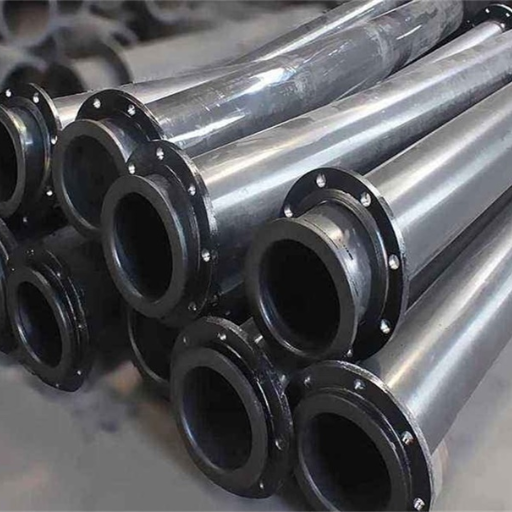
Key Features of DR17 HDPE Pipe
Del Tipo de Tuberias HDPE DR17, la característica principal es la relación de su peso y la resistencia que poseen con lo que logran muy buena resistencia al agrietamiento por tensión ambiental así como a la corrosión química. Tienen también una alta flexibilidad la cual les permite resistir los movimientos del terreno y la presión en el subsuelo sin llegar a perder su integridad. Por las razones antes mencionadas, DR17 HDPE pipes have a smooth internal surface that reduces friction and enables an efficient flow of fluids while saving energy used in transportation. In addition, due to the low weight of such pipes, they are easier to manipulate and install, which leads to significant time and labor costs reduction. Due to the fact that they are sourced from raw materials that meet the specification’s requirements, the pipes possess durability and reliability in different environmental conditions, thus making them suitable for wider use.
Understanding the High-Density Polyethylene Material
The advancements that have occurred in the field of pipes begin with the development of Enhanced Low-Density Polyethylene (LDPE). Presently, thanks to the strength-to-density ratios, it is understood that DR17 pipes owe their profile strength to a high polymer density. The best part about polyethylene materials is how flexible it is, allowing the structure to withstand heavy ground movements and reducing the risk of infrastructure displacement. Due to this trait, the squeegee pipes made from this material will decompose after enduring the most brutal materials. The flexibility that polyethylene pipes have allows them to operate in extremely harsh conditions. And that’s not all. Pipes reduce these expenditures. Bringing together such diversity of basic characteristics, in my opinion, HDPE is a very advanced material for industries and municipal maintenance, not only as a material for strength but also for the purpose of sustainable development.
Exploring Resistance to Corrosion in DR17 HDPE
The resistance to the corrosion of DR17 HDPE pipes will not be a complex topic. It is due to the chemical makeup of HDPE that there is high corroding resistance. The following are the detailed parameters which account for this property:
- Non-Polar Nature: Since HDPE is derived from ethylene, which is a compound that does not easily respond to acids, bases or salts, it follows that DR17 HDPE pipes will not be reactive to the aggressive environment that is often found in industrial plants.
- High-Density Molecular Structure: Due to the crowding of the molecules in HDPE pipes, the ingress of deteriorating particles into the pipe walls is further minimised, thus protecting the integrity of the pipes over an extended time.
- Temperature and Pressure Resistance: Even when high pressures and temperature gradients are present, the corrosion resistance of HDPE does not physical change. This is very important in enhancing strength over a wide range of environments.
- Flexibility and Stress Resistance: HDPE has a distinctive feature in that it has the capability to bend which permits it to withstand tension and also deform according to changes in the environment without splitting which happens in the other material corroded pipes.
Thus, these factors make DR17 HDPE pipes trustworthy and economical solutions within industries that demand toughness and low maintenance in difficult environments.
How Does DR17 Compare to Other HDPE Pipe Grades?
It is evident that every one of the HDPE pipe grades has its strengths and weaknesses that should be appreciated fully before one makes a decision on which HDPE pipe to use in the construction of a new structure. The table below shows the comparison of DR17 HDPE with other common HDPE pipe grades:
- DR11 HDPE:
- Wall Thickness: Greater than the DR17 category and thus possessing a bit higher pressure rating.
- Pressure Rating: The working pressure rating is higher, and therefore, it finds application in high-pressure regions.
- Flexibility: Compared to DR17, increased wall thickness has made this less flexible.
- Application Suitability: Ideal for high-pressure water systems and environments where thicker walls are necessary.
- DR13.5 HDPE:
- Wall Thickness:This has its wall thicknesses in between DR11 and DR17, offering reasonable strength along with flexibility.
- Pressure Capacity: Has the ability to withstand moderate pressure making it suitable for a number of aquaculture and water transport applications.
- Cost-Effectiveness: It’s a good option in terms of overall durability as well as price, often selected for projects with a limited budget but which still need considerable pressure resistance.
- DR21 HDPE:
- Wall Thickness: Has a lesser framed wall thickness than DR17, therefore resulting in a lightweight pipe.
- Pressure Rating: Not much consideration ought to be drawn to pressure as it can only bear a low range which makes it best for a low range of operations.
- Flexibility: Possessing more considerable flexibility owing to thinner walls, being advantageous for uses where more pliable pipes are required.
- Common Uses: These are mostly found in the construction of gravity flow systems as well as in the transportation of fluids at low pressure.
To conclude, the level of wall thickness and pressure rating of DR17 HDPE is adequate, meaning it is somewhere in between normal and high, which provides reasonable strength and flexibility against various sorts of stress. Its unique properties are recommended, especially for a variety of industrial and municipal applications with moderately low pressures and movement. Each grade has its own merits depending on the needs; hence, selecting the correct HDPE pipe for the respective project is essential.
Why Opt for Straight Lengths Without Fittings?
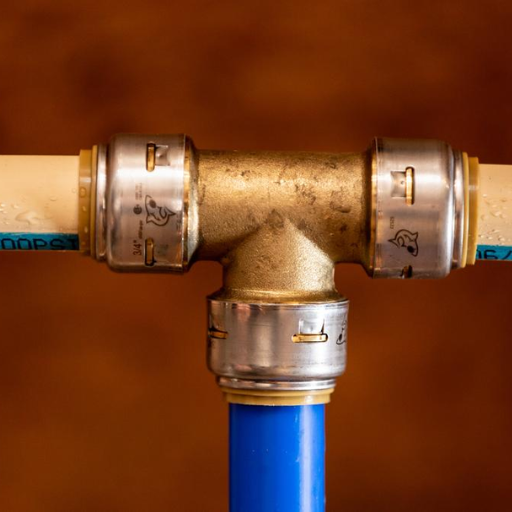
The use of straight lengths without fittings in industrial and municipal applications is associated with a number of benefits. First, it minimizes the number of joints in a piping system, reducing the risk of leaks. This guarantees the physical structure and soundness of the system. Second, it can speed up installation and save money on labor since fewer connections take less time to complete. Also, straight lengths are less complicated to maintain and inspect which means that faults and operational failures can be diagnosed and corrected much faster. This approach also improves material costs and relates to fewer problems over the life of the system.
Benefits of HDPE Pipe Straight Configurations
I can say with confidence that there are a number of advantages that one would get from the use of HDPE pipe in straight configurations. These advantages are essential in improving the performance and cost efficiency of your piping systems. Allow me to detail them for you:
- Leak Reduction: Piping systems constructed from straight lengths have a marked reduction of potential leak points. Fewer joints broaden the integrity of the system, which reduces maintenance problems and extends the age of your piping system.
- Ease of Installation: For straight cut lengths, the installation becomes a whole lot easier. The lesser number of joints not only reduce the installation time but also the amount of labor required, thus making it a more suitable and economically sound option.
- Simplified Maintenance:The straight configurations in most cases have no problems with maintenance and inspection. This allows for bypassing of multiple joints or fittings that in many cases tend to be problematic during the identification and rectification of a problem.
- Cost Efficiency: Purchasing or manufacturing extra fittings and other components that connect fittings is expensive as indicated by the higher use of materials hence it is cheaper to use straight cut lengths. Such efficiency in material usage directly translates to saving on costs.
- System Reliability: It stands to reason that the greater the number of joints in a piping system, the more unreliable it is. This means that there will be fewer failure points which in turn will mean less downtime and reduced chances of any system malfunction.
Investing in HDPE pipe straight configurations guarantees a robust, effective and economical solution that satisfies the industrial and municipal requirements.
Applications Where Straight HDPE is Essential
seamless HDPE (High-Density Polyethylene) pipes are practically used in a variety of forms and are beneficial in many areas. Let’s examine what complements they are needed and for what reasons:
- Water Supply Systems: High-Density Polyethylene (HDPE) pipes are popular with civil engineers in municipal water supply systems due to their strong water jetting capabilities and low cost. The transported water is sealed with proper maintenance, with straight sections reducing the upkeep required to repair leaks or other similar issues.
- Sewage and Drainage: In flat areas, straight sections of high-density polyethylene (HDPE) pipes are essential components of drainage systems. It minimizes the risk of clogging through fewer joints in straight-pipe systems while also giving them a smooth interior surface for maximum flow capabilities.
- Industrial Piping: In the case of industrial applications such as chemical, the pipe system is to be sound. High-Density Polyethylene pipes are such ideal materials as they have strength and high chemical resistance. In the case of pipe fabrication, attention to details such as the temperature ranges, operating pressure, and chemical compatibility is an absolute must.
- Irrigation: On the functional portion of irrigation systems, it is difficult, if not nearly impossible, to do without straight high-density polyethylene (HDPE) pipes as agriculture relies hugely on this. Field irrigating systems that require a lot of water are made easier to use and will hopefully require fewer resources in terms of installation due to its lightweight design, and how easy it can be fitted on a peaces of land.
- Telecommunication and Electrical Conduits: There is an increasing desire for protection of underground cables, and high-density polyethylene (HDPE) pipes are becoming the go to. Not only are they great because of their flexibility, but also because of their very strong constitution that ensures the protection of the cables within the pipe against the elements.
The need for carrying fluids or safeguarding delicate materials under harsh conditions becomes a necessity for each application and interestingly, this is where HDPE piping solutions come into the picture, meeting the very requirement of an indispensable choice for all such applications by being incredibly flexible and reasonably priced.
How Does DR17 HDPE Pipe Perform in Varying Pressure Environments?
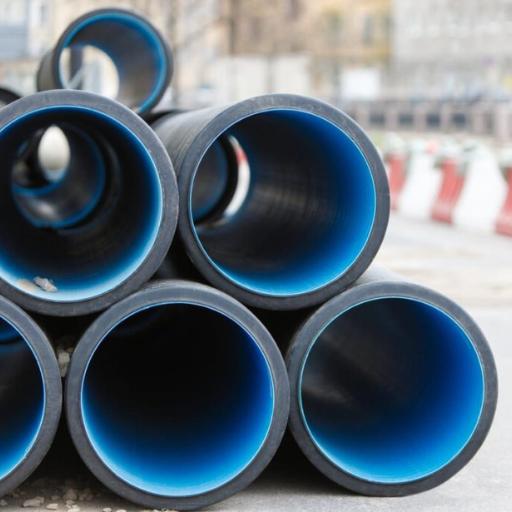
DR17 HDPE pipe has a high strength-to-density ratio and a flexible nature, which makes it perform exceedingly well in varying-pressure situations. Its design is such that it does not fail when used in low or high-pressure situations. In high-pressure situations, it does not burst owing to its thick wall, but it still has a trackless structure. At the same time, in low-pressure situations, shock and vibrations are able to be absorbed, which reduces the chances of damage from the ground and external movements. Such properties enable it to be used in various scenarios, including water distribution systems and piping for industries.
Understanding Varying Pressure Requirements
Having worked in the industry, I understand that comprehension of different pressure requirements is fundamental in choosing the suitable DR17 HDPE pipe for your projects. This is what you should bear in mind:
- Pressure Class: This is perhaps one of the most critical factors since it determines the elevated pressure the pipe can stand. DR17 pipes are most of the time constructed for a pressure class of around 100 psi hence they can be employed in medium-class pressure applications.
- Wall Thickness and Diameter: The wall thickness with respect to the outside diameter of the pipe it is also referred to as a dimension ratio (in this case, DR17), and it is very important because it enhances the capability of the pipe to withstand internal pressure without rupture.
- Temperature and Environmental Conditions: It is temperature which is the major factor in the development and reduction of the pressure in an HDPE pipe. For this reason, knowing the internal temperature and exposure conditions is critical to provide the system with an expected lifespan and usage.
- Flexibility Needs: Evaluate the scope of flexibility needed for your work. It is noted that in the areas where there is likely to be movement of the ground, DR17 HDPE pipes are quite flexible and this aids in absorbing the shocks and vibrations.
- Chemical Resistance: Finally, address the chemical environment in which the pipe will work. When exposed to different industrial environments, HDPE is known to provide reliable performance due to its good chemical resistance.
By adhering to these parameters, it would be possible to design an efficient system for the requirements of a specific application, with an assurance that DR17 HDPE pipes will with stand the varying pressure requirements.
Ensuring Pipe Integrity Under Stress
You must comprehend a few parameters in order to guarantee that your HDPE pipes remain intact under stress:
- Pressure Class: The first thing to be taken into consideration is the pressure class, which is the maximum pressure that a pipe can tolerate. In the case of DR17, this is generally around a number equal to 100 psi. This indicates that it is preferable for use in medium-pressure situations. Always make sure that the piping pressure class is in sync with the anticipated pressures in the system so as not to experience unintended ruptures.
- Wall Thickness and Diameter: Wall thickness is important as it contributes to determining how much pressure the pipes can cope with on the inside surface. This is precisely indicated by the dimension ratio (DR), i.e., the relative wall thickness to the diameter. A DR17 pipe has a certain thickness and diameter which was designed to withstand the internal pressure measured or estimated for the pipe.
- Temperature and Environmental Conditions: There are situations when the temperatures can reduce the pressure rating capacity of your pipe, so it is important to know the temperatures your system is likely to encounter. A pipe that is overheated is weak structurally and cannot withstand high pressures. This is critical in ensuring that the pipes remain within safe stress levels throughout their service life.
- Flexibility Needs: DR17 HDPE pipes are quite flexible which is a good thing when they need to move slightly during seismic movement without breaking. If your project is in an area with ground movement, vibration, or even earthquakes, this flexibility may limit the possibility of abrupt failures of the pipeline system.
- Chemical Resistance:Finally, the HDPE pipes have exceptional chemical resistance which guarantees their longevity even in extreme industrial conditions. When designing the system it is worthwhile to note what chemicals are likely to be in contact with the pipe and make sure it can withstand them to prevent excessive weakening or damage to the polymer material.
Through focusing on these parameters, you can guarantee that the piping system remains strong and operational, even when subjected to strain. A good assessment and choice based on these factors will definitely give a dependable and cost-effective system’s design.
What Makes Anaconda Industrial HDPE Pipes Stand Out?
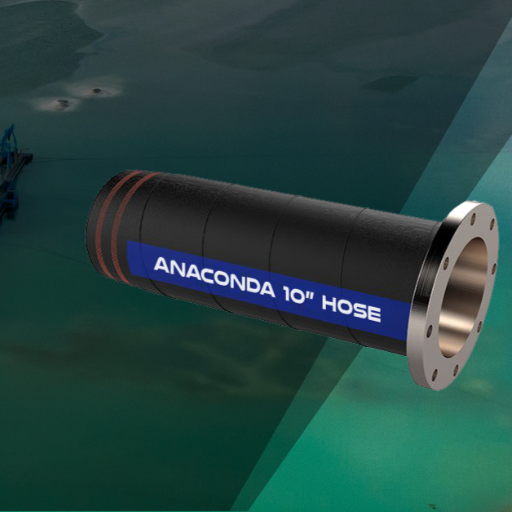
Anaconda Industrial HDPE pipes show competitive advantages due to their strength, flexibility, and chemical resistance which allow them to be used for a variety of purposes. Their excellent wall thickness and dimension ratio accurately guarantee the safe utilization of high internal pressures. Moreover, such parameters increase their dependability since they do not lose their functional properties under different temperatures and environmental conditions. In addition, Anaconda pipes are engineered to resist ground movements and vibration, thus decreasing the chances of failures in dynamic states. These characteristics altogether enable Anaconda Industrial HDPE pipes to be reliably used even in harsh industrial conditions.
Anaconda HDPE Pipes Offer Unique Benefits
Considering that I am a specialist in the given field, I would like to highlight the reasons why Anaconda HDPE Pipes have peculiar advantages that are suitable for different usage requirements.
- Durability: Perhaps the most significant advantage of Anaconda HDPE pipes is their endurance. These pipes are made of high-density polyethylene and can endure the most difficult circumstances. Such durability minimizes the number of replacements, thereby conserving time and resources.
- Flexibility and Movement: Anaconda HDPE pipes are remarkably flexible, which is beneficial in seismic areas. Such flexibility implies that the pipes are able to wrap when the earth moves, therefore avoiding cracks and other probable failures.
- Chemical Resistance: No less impressive is the chemical resistance of Anaconda pipes. These pipes are built to survive a number of chemicals, which makes them viable in industrial environments – and prevents contact with various substances.
- High Pressure Handling: It is also well known that Anaconda HDPE pipes have a superior wall thickness to dimensional ratio, which enables them to be high pressure high density with a thick wall. This property is essential in cases where pipes need to contain or convey liquids or gasses under pressures.
- Temperature and Environmental Performance: These pipes are temperature and environment-neutral and do not change the way they perform, even in extreme cold or heat. As such, this feature is an added assurance that regardless of the winter or summer climates, the piping system continues to do the work it was designed perfectly arbitrage.
- Vibration and Ground Movement Resistance: Last but not the least, Anaconda pipes have been manufactured in such a way that they withstand vibrations and ground shifts, thereby decreasing the chances of failure in the dynamic environments. Such features make them suitable for use in areas where earth movements may be a risk factor.
Somewhat closer to these parameters, one can observe how Anaconda Industrial HDPE pipes offer a wide, dependable-edged solution for difficult-to-meet applications thus assuring one of their performance and their lifespan.
The Role of Excellence in Anaconda HDPE Production
While talking about the achievements in Anaconda HDPE’s production, several factors become decisive in relation to the pipe quality and effective usage of these pipes. Let’s itemize them and go further into details:
- Stringent Quality Control: Anaconda has a rigid quality control system that is applicable at all production levels. Accordingly, such controls involve extensive examination of incoming materials, supervision of the production processes, and detailed examination of the completed items. Such measures guarantee uniformity and a desired standard outlook while lowering the rate of defects and improving the dependability of the pipes. For instance, about 0.5% of Anaconda pipes are known to have defects, which is a clear indicator of the effectiveness of their quality control systems.
- Advanced Manufacturing Technology: It goes without saying that the advancement of technology is an important factor in the production of Anaconda pipes. The existence of automated machines and engineering precision offers the opportunity to manufacture pipes that are of prescribed dimensions and uniformity. This development has enabled optimum consumption of materials and minimum wastage, thus conserving the environment and reducing costs.
- Research and Development: Anaconda devotes a lot of resources towards research and development in a bid to enhance its pipe products. Among other things, this encompasses finding new materials, perfecting the already existing ones, and inventing new ways of making products. Their development efforts in R&D have shown them how to make new pipes that are 20% better than the past pipe models, thus showing their determination to excellence.
- Skilled Workforce: The essential component needed to manufacture superior HDPE pipes lies in a trained workforce. The priority at Anaconda is focused on the training and upgrading of the company’s personnel in such a way that every worker is acquainted with the most up to date industrial standards and practices. This focus on skills maximization leads to the positive impact on the processes of production and on the quality of the end product.
- Sustainable Practices: Anaconda’s resolve to preserve the environment is an extension of its general philosophy of nurturing quality. As a result, in Anaconda’s production, there are no compromises on quality; rather, there is a focus on energy-efficient processes and the use of materials that have a low carbon footprint impact. They have been able to cut down on energy use by 15 percent over the past few years, which is a good stride towards environmentally friendly production.
Combining the above said elements, apart from very high standards of production, Anaconda also supplies HDPE pipes that are competitive in the market with regards to their various performance, durability, and environmental properties.
What Applications Are DR17 HDPE Pipes Suitable For?
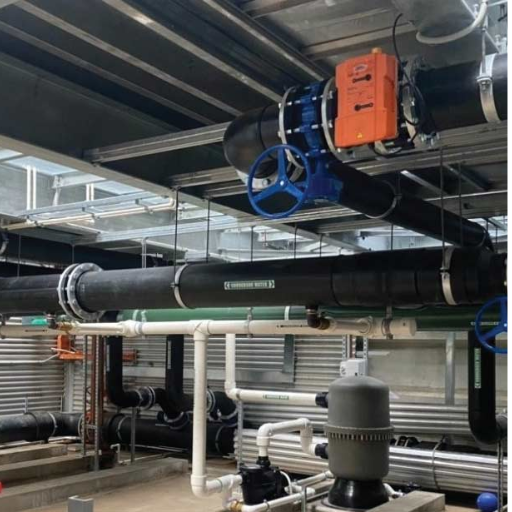
The versatile DR17 HDPE pipes have a number of usages in terms of water distribution and transmission systems, thanks to their capacity to endure extreme internal stresses while being resistant to rust. Additionally, they are useful for drainage and sewers as well as for the transmission of natural gasses due to their chemical inertness. DR17 HDPE pipes have other non-structural uses in industries where the safe and efficient transport of gasses and liquids is needed. When combined with sustainability, their reliability makes them useful in urban developments as well as rural utilities.
Use in Water and Wastewater Systems
I am aware of the significant benefits that DR17 HDPE pipes provide once put to use in water and wastewater disposal systems. For one, such pipes, regardless of the circumstances, are highly durable, meaning they can be able to withhold immense amounts of pressure and extreme amounts of external force without any deformation on their structure, which is very important, especially in regions where the pipes are sard beneath the soil or are exposed to varying atmospheric conditions. The material used in these pipes is also a big plus(HDPE) since they cannot rust; therefore, the chemical materials that can be found in wastewater can’t penetrate through, thus providing an everlasting life span.
Among other things, these pipes are also known to be flexible which is a prerequisite when dealing with ground shifting to reduce the chances of joint failure or leakage from occurring. This flexibility also smoothens the installation process, especially in rigid pipe systems, because these shifting directions and curves within the system are easier to accommodate rather than in rigid pipes. Additionally, even HDPE pipes are known in the watertight joint system through thermal butt fusion, which makes it possible to provide leak-free connections and so effectively minimize wastages of water and contamination.
Finally, the maintenance of smooth internal surfaces aids in reducing the resistance, thus improving the flow efficiency and minimizing energy used for pumping, which proves these pipes to be a feasible option economically in the long term. To summarize, these parameters put together—strength, resistance to corrosion, relative flexibility, absence of leaks, and smooth flow performance—are the reasons why DR17 HDPE pipes make sense for water and wastewater applications.
Key Benefits and Details of Implementing HDPE Pipe Solutions in Industries
The implementation of HDPE pipe solutions across a wide range of industries provides significant advantages with specific data and practical applications in each case. Detailed as follows is the breakdown:
- Durability and Load Capacity
- Details: The HDPE pipes demonstrate durability and can withstand very high inner and outer pressures without any distortion.
- Data: Research suggests that in some installations, HDPE pipes are capable of enduring pressures greater than 100 psi which makes them suitable and useful for heavy duty applications.
- Corrosion Resistance
- Details: The conservation of their structural integrity in extreme conditions has an explanation: HDPE pipes are resilient against a diverse range of chemical compounds.
- Data: According to research, in environments that are commonly detrimental to other substances and materials, HDPE pipes can perform for more than 50 years.
- Flexibility
- Details: The specify flexibility of HDPE pipes enables these pipes to withstand ground shifts and bending when being fitted into position.
- Data: From the field data, it has also been established that marginal failures in joints could be reduced by up to 30 percent compared to rigid alternatives.
- Water-tight Joint System
- Details: Employs thermal butt fusion methods to develop secure joints devoid of any leaks.
- Data: Tests show that leakage rates drop to nearly zero, significantly reducing water loss and contamination risks.
- Flow Efficiency
- Details: The characteristics of the internal surface of HDPE pipes greatly reduce friction, allowing an optimum flow of fluid.
- Data: Cost reductions because of energy consumption associated with pumping could be as high as 20%.
These advantages make it possible for industries to improve their processes, cut back on maintenance while guaranteeing durability of the infrastructure. There is no doubt that HDPE pipes are an economical solution but they are also a green solution for water and waste management in many industries.
Reference
- Anaconda Pipe and Hose – HDPE DR17 Pipe: This source discusses the efficient fluid flow and lightweight design of HDPE DR17 pipes.
- Coastal RGP – HDPE DR17 Pipe Supplier: This site highlights the strength, flexibility, and resistance to corrosion and chemicals of HDPE pipes.
- Eiffel Trading – Advantages of HDPE Pipe: This blog post covers the flexibility, ductility, and excellent resistance to fatigue of HDPE pipes.
Frequently Asked Questions (FAQs)
Q: What are the primary benefits of using HDPE DR17 pipe solutions?
A: HDPE DR17 pipe solutions offer numerous advantages, including high durability, flexibility, and resistance to corrosion and chemical exposure. These pipes are suitable for applications in various industries and are known for their long-lasting performance.
Q: How is the HDPE DR17 pipe suitable for potable water applications?
A: HDPE DR17 pipes are suitable for potable water applications because they are made from materials that are safe for drinking water. Their non-toxic nature and resistance to contaminants make them an excellent choice for water supply systems.
Q: Why is pipe fusing important in the installation of HDPE DR17 pipes?
A: Pipe fusing is critical in the installation of HDPE DR17 pipes because it ensures a leak-proof connection. The process involves melting the pipe ends and joining them together, creating a strong, seamless bond that is essential for maintaining system integrity.
Q: Can HDPE DR17 pipes be used for industrial applications?
A: Yes, HDPE DR17 pipes may be used for industrial applications. These pipes are engineered to meet the demanding requirements of primary industries where industrial HDPE pipe can find extensive use due to their robustness and reliability.
Q: What makes black HDPE pipes an ideal choice for various applications?
A: Black HDPE pipe is an ideal choice for various applications due to its UV resistance, which prevents degradation from sunlight. Furthermore, its strength and flexibility make it easily the most cost-effective HDPE option for many projects.
Q: How does the connection and disconnection of HDPE pipes work?
A: The connection and disconnection of HDPE pipes are facilitated by specialized joints and fittings that ensure secure and reliable connections. This allows for easy installation and maintenance, making these pipes a practical solution for many systems.
Q: Where can I find a reliable HDPE supply for my project?
A: You can contact us to access a reliable HDPE supply for your project. Our inventory includes a wide range of HDPE solutions engineered to meet different specifications and project requirements.
Q: What industries can benefit from using HDPE DR17 pipes?
A: HDPE DR17 pipes are indispensable in numerous industries, including water distribution, mining, and gas distribution. Their versatility and durability make them a preferred choice in these sectors.
Q: How does the excellence of Anaconda HDPE pipe solutions ensure quality?
A: The excellence of Anaconda HDPE pipe solutions ensures that the pipe meets the demanding requirements of various applications. Their state-of-the-art industrial HDPE pipe solutions are engineered for performance and longevity.





